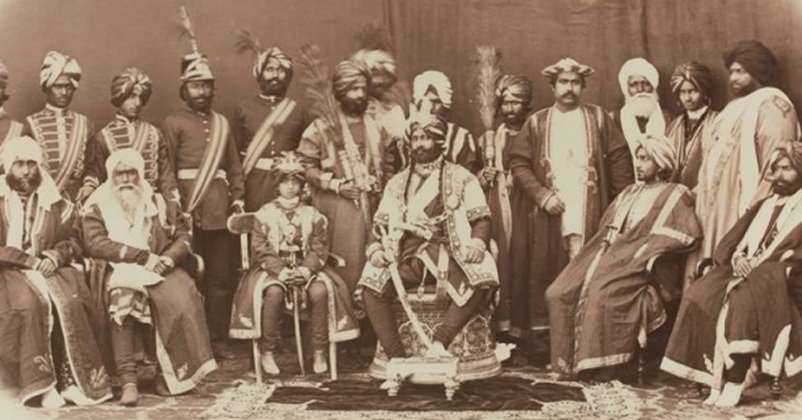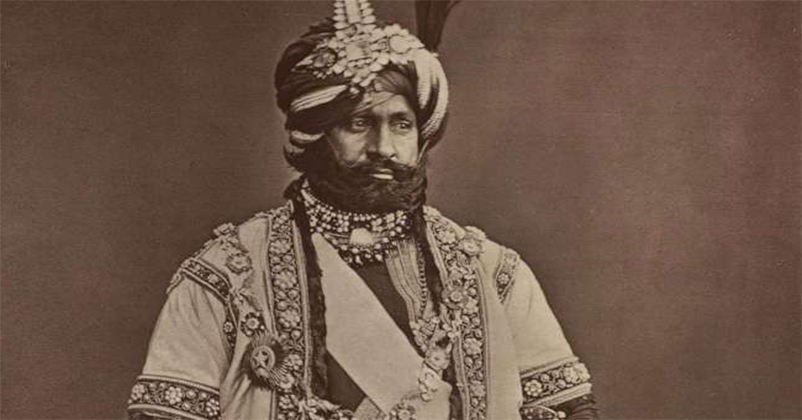Maharaja Gulab Singh and his ingenious role in shaping destiny of Modern ‘Jammu Kashmir’
| 16-Mar-2020 |

He, who distinguished himself as a soldier while still in his teens, rose to become a successful commander in his 20s and had the distinction of being the only person to have established a kingdom and dynasty as late as in the previous century.
The founder of Jammu and Kashmir, he, was the ambitious, ingenious Maharaja of the state, Gulab Singh who was crowned on Jun 16th,1822 by his predecessor, Maharaja Ranjit Singh himself. With the day itself, Maharaja Gulab Singh began to mark his conquests, from Jammu to the valley of Kashmir, then Ladkah and Tibet. Gulab Singh was the ruler who started his career as sepoy in the army of Maharaja Ranjit Singh of Punjab and rose to the Maharaja of J & K state by annexing Kashmir and parts of Tibet in his territory.
In 1846, Maharaj Gulab Singh signed with the British, the historic Treaty of Amritsar thereby marking the Dogra rule in the state of Jammu and Kashmir.
If the mesmerising Valley of Kashmir, besides Ladakh, became part of Jammu and Kashmir and India, it is only due to Maharaja Gulab Singh, the founder of the state.

Gulab Singh, founder of J & K State (1846 – 1857 AD) and his prominent role in consolidation of J&K
When he set out from village Smailpur, near Bari Brahmana to seek his fortunes after he had distinguished himself as a soldier while defending Jammu against a force despatched by Maharaja Ranjit Singh, little did he imagine that he would return to be crowned as the Maharaja. Besides establishing a vast kingdom of Jammu, he took over Valley of Kashmir and later conquered Ladakh and Lhasa (Tibet) extending its boundaries to Tibet on one side, Gilgit and Skardu and Mirpur on the other (now POJK)
Interestingly, after defeating the force sent by Maharaja Ranjit Singh, he set out for Lahore and joined his army as a sepoy. He rose rapidly and accompanied the Sikh king on important campaigns.
He played a prominent part in consolidation and extension of Lahore State by crushing local rebellions and repelling inroads from the north-west. His services received recognition when Maharaja Ranjit Singh personally installed him as the Raja of Jammu.
16th March, the day when Maharaja Gulab Singh laid foundation of the state of J&K, and the ‘Treaty of Amritsar’
On June 16, 1822, Ranjit placed the traditional Raj tilak on Gulab Singh’s forehead at Jiapota on the banks of river Chenab at Akhnoor. A thara on the banks of the river still marks the platform where Gulab Singh was anointed. During the initial years of his reign, Gulab Singh concentrated his might to consolidate his rule up to Pir Panjal.
After the death of Ranjit Singh in 1839, anarchy and misrule started in Punjab, Ranjit's son Kharak Singh who did not prove an able administrator, died shortly afterwards in 1840 and a supervisory council was set up under Maharani Chand Kaur to manage the affairs of the administration.
Sikhs had to fight a battle with British which they lost. Later, under the treaty of Amritsar, Kashmir Valley and some areas of Himachal Pradesh were ceded to the East India Company as indemnity.
The British, however, did not want to retain these areas on political grounds. Moreover, Gulab Singh was already the ruler of the area from Ravi to Pir Panjal so they signed a separate treaty with him for the transfer of these areas in lieu of Rs. 75 lakh on March 9, 1846 at Lahore.
Subsequently, Gulab singh extended the boundaries up to Western Tibet with the help of his great warrior, General Zorawar Singh, who led these difficult and hard campaigns and was ultimately killed in Tibet.
The Treaty of Amritsar was concluded on Mar 16th, 1846 between the British Government and Maharaja Gulab Singh, to direct and control all the affairs in the East Indies and by Maharaja Gulab Singh in person.
‘He, who obtained triumphs and accomplished social & religious goals ably’, in words of scholars and historians
"Gulab Singh was not only the warrior and able administrator but also a secular minded king and there was complete freedom of worship," says Dr. D.C. Sharma, an eminent scholar and historian. He gave patronage to a famous shrine of Shahdara Sharif near Rajouri. He attached a Jagir to the shrine the income of which was spent on the pilgrims for providing them free food and accommodation.
A renowned historian, Sukhdev Singh Charak, who retired as head of History Department in Jammu University and is author of a number of books and translator of many original works written in Persian and Urdu, Says that Maharaja Gulab Singh never forgot his roots was approachable by his ‘praja’.
He also introduced his currency, Chilki rupee which was equal to ten annas of British rupee.
He abolished the system of bonded labour and also banned sati pratha and female infanticide. He re-organised the industry in Kashmir valley and introduced a new law providing relief to the workers and rationalising the system of taxation.
And interestingly, he was among the few rulers who handed over the reins of administration to his son during his lifetime. He enthroned his son Ranbir Singh in 1856 and shifted himself to Srinagar as the Governor of Kashmir. He died a natural death in 1858 AD at the age of 65 years.
